

When did you first start venturing into the backcountry?
As a kid growing up, I’d go into the backcountry here [in Sun Valley] to build jumps on the side of the road but back then there wasn’t as much avalanche safety awareness. Me and my friends would just go on the side of the road—technically it’s backcountry—we’d have shovels because we were building jumps but we didn’t have transceivers. When I started going to school at the University of Utah, I got a little more keen on avy awareness, got into a Level 1 avy class, invested in all the gear and bought a BCA Tracker 2 tranciever, shovel and probe. After I took the Level 1 class I realized how much I still needed to learn if I was going to ski in the backcountry for the rest of my life. The next year I got into a Level 2 and continued my education, got a wilderness first responder certification and eventually did a Level 1 Pro class when they changed the curriculum. This year I’ve got an opportunity to do a Level 2 Pro up in Haines, Alaska with Stellar Adventure and we’re going to do that course through AAI.
I’m really excited to do the Level 2 Pro; the biggest thing that’s been holding me back the last few years has been the price tag on it. Now that I’m heli-guiding, I’ve got an employer who is going to pay for the course. Last season I trained as a heli-ski guide and now this year, once I get my Level 2 Pro, I’ll have all of the certifications to officially guide up there. It’s been a dream come true to even ski in Alaska much less have an opportunity to guide. I’m really stoked on the program at Stellar Adventure, they’ve got some awesome guides and really good mentorship there.
Did you have mentors who helped usher you into the backcountry?
Honestly, my first mentor was Matt Heffernan. We went up in Little Cottonwood and that’s when I first got my gear and all that. Now moving forward, I’d say the Caldwell brothers, Wyatt and Yancy. They’ve been mentors for me out here and then some of the local sledders I got out with, like Michael Franco, Jeremy Lato, Matt Gier, those guys are all awesome mentors. I’m always still seeking that mentorship too. A lot of it comes from the filmers and other people you’re working with out there.
You’re known for sledding and shredding in the backcountry but you’re also training to be a guide, what spurred that decision?
After going to Alaska for the first time I knew I wanted to go back to Alaska every year for the rest of my life. I wish I would’ve gone ten years sooner [laughs]. Especially trying to film up there, it’s just so expensive and not really sustainable, so my goal is to gain experience and get to know the range. Ideally I want to be able to work three quarters of the season but still be able to take a couple weeks off to film.
Ultimately my goal is to get more experience and get to know the range and it’s just not sustainable to pay to do it as a film crew. It’s so much money and I don’t want to always go out as the guided client, you don’t really get to ski the ski-movie stuff if you’re a paying client. When you’re a film crew you accept a higher responsibility of what you’re doing and the right operations will allow you to call more of the shots, but the biggest thing for me was getting paid to learn the range rather than paying money that I don’t have to learn the range. I’m hoping to learn every single peak, river, valley that’s in our tenure out there and then start to put together a hit list. It’ll end up being like a five-year investment when I finally get to the point of putting the dream film project together but I’m hoping to eventually have really productive weeks. It’s also really scary going up there for a week or two and not getting a good look at what the snowpack is doing. As a guide, I get to study the snowpack and get an intimate look at what the season’s snowpack is doing. This year I’ve already started following the snowpack up there, keeping tabs on it and the more you’re out there and keeping an eye on the snowpack, the more you know to approach with confidence or to step back.
Have you had any scary scenarios that have influenced the way you travel in the backcountry?
Yeah, absolutely. I had an incident in 2018 where I was just riding my snow machine on a summer road switchback and I triggered a slab above the road that wiped me off, carried me over the road through a bunch of 100-year-old Douglas Firs and honestly to this day, I feel like I had guardian angels that saved my life. I got completely enveloped by the slide and spit back out where I should’ve either been buried or wrapped around a tree. I walked back up to the road, my snow machine was completely gone, I got on my buddy’s sled and we got out of there. That was probably the most impactful day of my life and changed how I approach everything in the backcountry. It’s just so gnarly when you feel the raw force of mother nature and just how helpless you are. I’ve had PTSD from that incident ever since but I try to redirect that energy and use it as a positive. It’s just such a terrible feeling to know my buddy almost had to go home and deliver the news to my friends and family that I died in an avalanche, I even get choked up just talking about it. It took a little while to get back on the horse after that one, for sure.
Using a snowmobile can help cover a lot of ground really quickly, which means you’re traveling over different snowpacks a lot faster. How do you manage safety on your sled?
You have to have 10-times more confidence in the terrain because you’re covering 10-times as much terrain. The sled is a tool to keep you out of trouble, rather than get you into trouble. If it’s too high of avy danger to ski steep stuff then I’ve started to pick out terrain in different zones that’s all below 25 degrees [in slope angle] and just go out and have a non-avalanche terrain day. I don’t like skiing non-steep stuff so the sled is a great tool for staying out of trouble [laughs].
What safety tools do you always carry in your backcountry pack?
Beacon, shovel, probe, saw, first aid kit—that’s what I always have on me—as well as a radio and satellite phone. Staying within communication when you’re in remote terrain is key so you can reach out if you do need help. I always make sure to tell people where we’re going, what we’re doing, what the game plan is. I definitely accentuate communication and how key that is. I love the BCA radios because you can get on so many different channels. Even though a beacon, shovel and probe are irreplaceable, I’d say a BCA radio is still at the top of my list of tools because there’s no room for miscommunication in the backcountry.
Who is in your ideal group to travel with in the backcountry and why?
Just any of my friends who are stoked on skiing and want to go out and have fun. They don’t take skiing too seriously but realize we have to take avalanche safety super seriously. The people who can thread the line of being laid back and having fun but also are on-point and trustworthy partners in the backcountry. They can be super lighthearted, cracking a joke one second and ready to have your back the next.
How do you brush up on your backcountry safety skills early season?
For me, it’s doing safety mock drills in the backyard or at the trailhead. Staying Alive in Avalanche Terrain is pretty much my bible. I dive into that book every single season, I feel like I’ve read it front-to-back at least five different times. Last year I read it backwards [laughs]. I pick out individual chapters to review, I go to the glossary and make flash cards to make sure I understand all of the terminology.
What are some red flags to pay attention to while traveling in the backcountry?
Any sort of avalanche activity. A small cornice break, a small sluff can be a sign of bigger instability. Feel with your pole, is the snowpack right side up or upside down? Are you getting any whoomphing or collapsing, or does the snow feel stable? How much was the wind blowing the night before? Try to be really observant of everything that’s going on.
What’s one safety tip you’d give to backcountry skiers and sledders?
Don’t be afraid to turn around, be proud to turn around. It’s a guessing game no matter how experienced you are. If you don’t have the confidence to get into steeper terrain, be proud of yourself for turning around. You want to be able to write a book on the amount of times you turned around because your confidence was below 100 percent. Don’t think that you’re a failure because you don’t have the confidence, the mountains are there to humble you.
Enter for a chance to win a Tracker4 Rescue Package from Backcountry Access!
![[Q&A] Learn how Karl Fostvedt's continued avalanche safety training plays a main part in his success as a professional skier](https://www.datocms-assets.com/163516/1751489652-fostvedtfeatrued.png?auto=format&bg=FFFFFF&w=100)
![[Q&A] Learn how Karl Fostvedt's continued avalanche safety training plays a main part in his success as a professional skier](https://www.datocms-assets.com/163516/1751489652-fostvedtfeatrued.png?auto=format&bg=FFFFFF&w=1200)
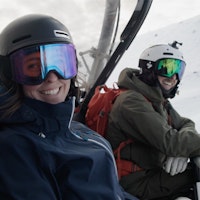
![[GIVEAWAY] Win a Head-to-Toe Ski Setup from IFSA](https://www.datocms-assets.com/163516/1765920344-ifsa.jpg?w=200&h=200&fit=crop)
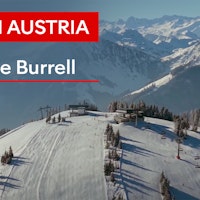
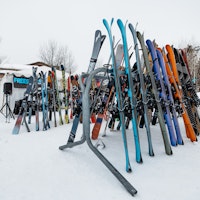
![[GIVEAWAY] Win a Legendary Ski Trip with Icelantic's Road to the Rocks](https://www.datocms-assets.com/163516/1765233064-r2r26_freeskier_leaderboard1.jpg?auto=format&w=400&h=300&fit=crop&crop=faces,entropy)
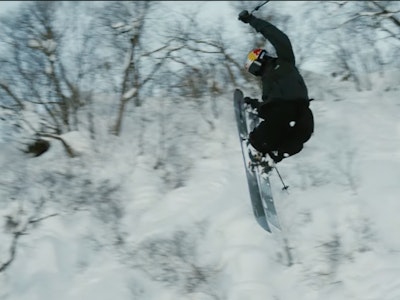
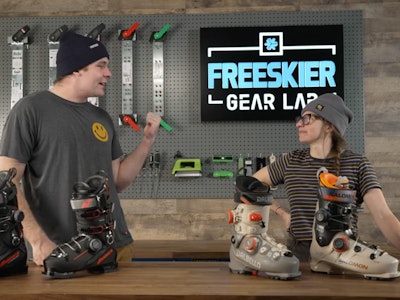
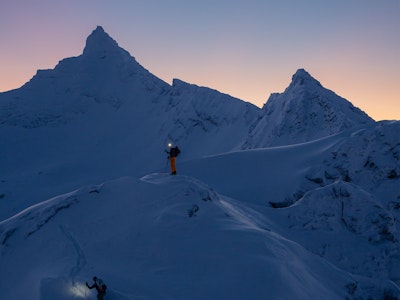
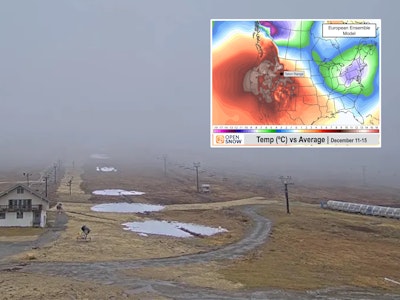
![[GIVEAWAY] Win a Head-to-Toe Ski Setup from IFSA](https://www.datocms-assets.com/163516/1765920344-ifsa.jpg?auto=format&w=400&h=300&fit=crop&crop=faces,entropy)
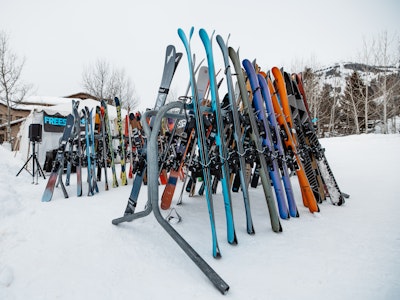
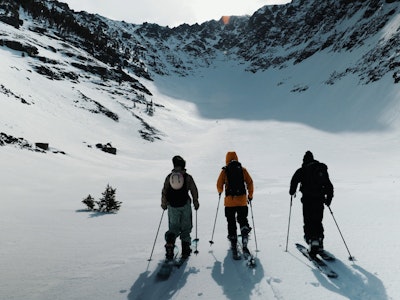
![[Q&A] Learn how Karl Fostvedt's continued avalanche safety training plays a main part in his success as a professional skier](https://www.datocms-assets.com/163516/1751489652-fostvedtfeatrued.png?auto=format&bg=FFFFFF&w=2000)